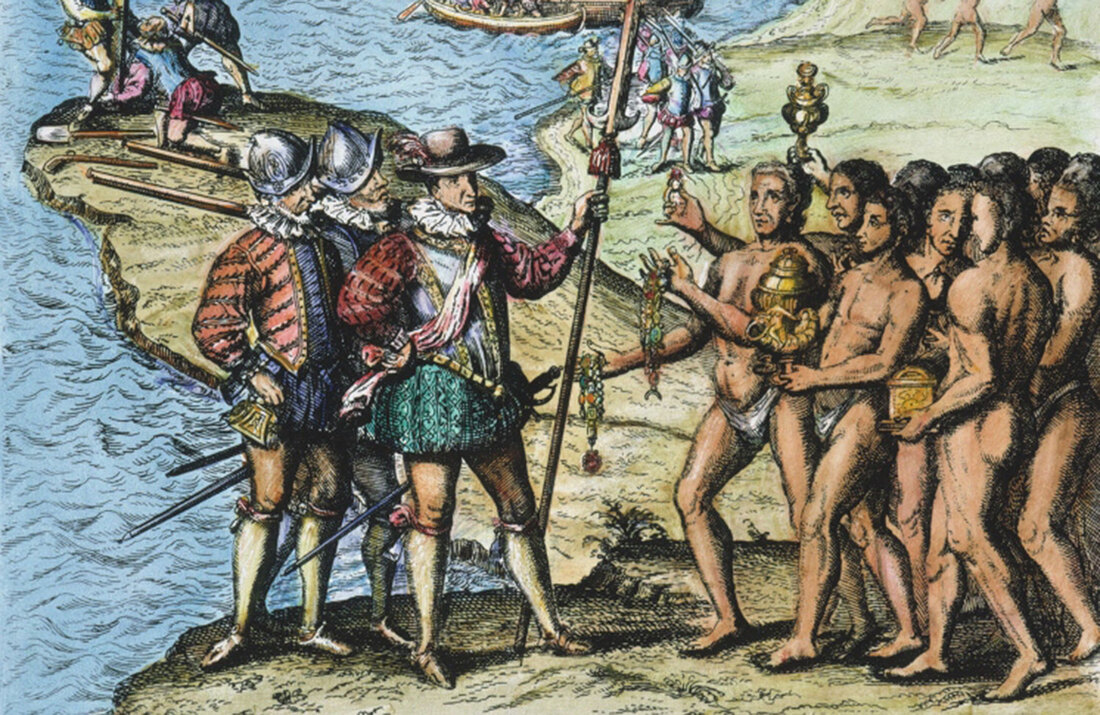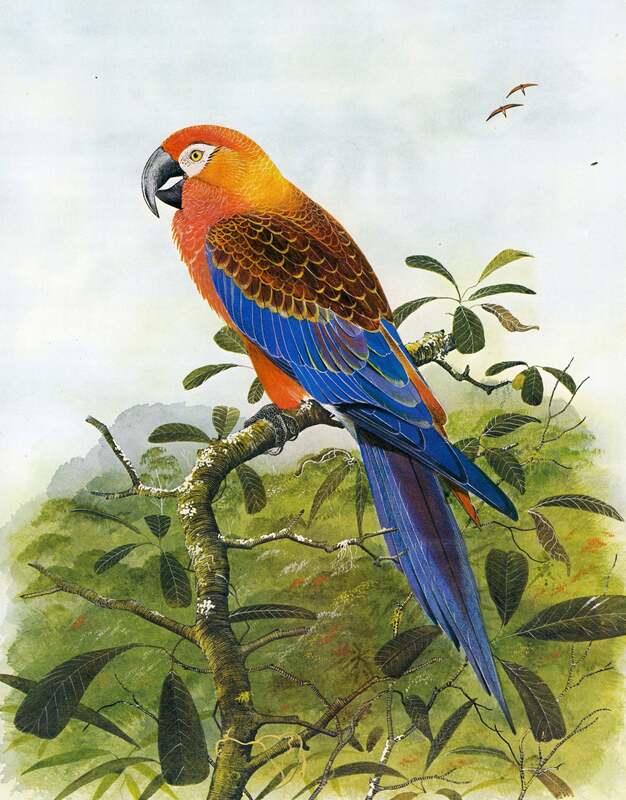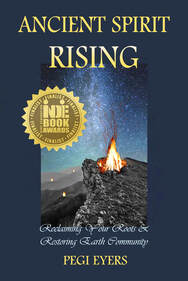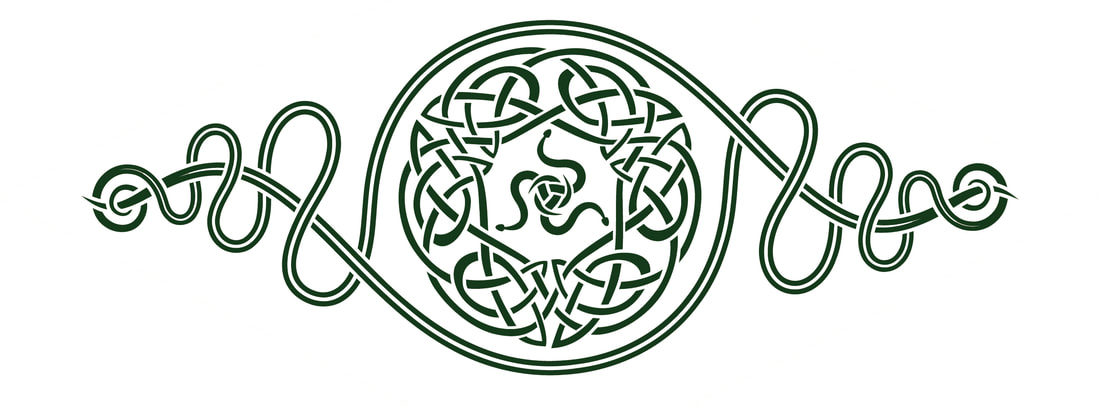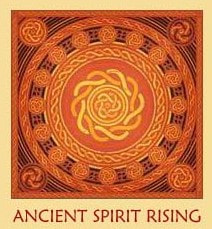REVIEW BY PEGI EYERS
Hayti is a powerhouse of a book that describes colonial landfall in the homelands of the Taíno, now known as Haiti and the Dominican Republic, on the island of [so-called] Hispaniola. Ostensibly the first work of fiction from the "New World” circa 1510, apparently over the centuries the manuscript passed through different hands and translations to be published by Cambria Books in 2017. And yet Hayti is a strange mystery. Who exactly is Kurtis Sunday the author? There is no mention of that name as either novelist or translator. But what is crystal clear are the two separate narratives woven together – Sor Lucrezia di Marchionni, a Hieronymite nun, and Fray Hugo de Montenegro, a Dominican monk - who describe in painstaking detail the first contact period, in all of its conquering greed, “glory” and brutality, and the original beauty of the island – a beauty so exquisite our modern minds can hardly comprehend the lush paradise that was once Ayiti ("land of high mountains") before the Spanish took control.
“Life abounds here. Never have I laid eyes on such fecundity. It is what they call the rainy season now, but every now and again the rain ceases and the grey clouds part and the sun appears – never for very long, but long enough to give one an impression of its reported ferocity at these latitudes – and everything becomes suddenly bright and lustrous and glistens; and the world fleetingly appears as it perhaps appeared, newly created and glorious. And I look with a sort of childish wonder on it all; the verdant grass and palm trees in our nunnery garden, the flowers so delicate and colourful, the white mist enveloping the hills to the north of us, and the glittering surface of the sea in the bay.” (Sor Lucrezia di Marchionni)
Peculiarities in character development aside, i.e. how did a Hieronymite nun have influence in the patriarchal Catholic Church of 1510 (?) and the stereotypical portraits of Taíno individuals, the rich detail in Hayti reads like an eyewitness account. The pristine condition of the ocean, rivers, jungles, mountains and low-lying areas; the Indigenous Knowledge of the Taíno, rich in animist and earth-emergent wisdom; the centering of travel by ocean passage; the sailing fleets important at the time and the great Armadas of soldiers, colonizers and African slaves constantly arriving; the struggles of the Taíno as their social equilibrium is destroyed by enslavement and genocide; the Eurocentric lens and racist worldviews of the explorers, military and early capitalists backed by twisted religious proclamations; and the Castilian greed to dominate and destroy are all outlined in incredibly animated and evocative prose.
In the narrative Columbus is still alive - alternatively revered as a God or despised as a despot - and running through the novel (or is it a memoir?) are elaborate scenes on the making and reading of maps; early colonial architecture; religious observations and governance; medical care; early agricultural operations; the breeding of horses, cattle and sheep; early manufacturing, wine-making and other industries; armaments and gunpowder; and the production of religious ikons and statues for the Castilians, who were "scruptulous in performing devotions before drawing their swords and shedding blood.” Laid bare are the Spanish patriarchs who took pleasure in cruel and violent acts toward people of colour; the banking cartels; the race to claim the riches of “the new world;” the overwhelming greed for Caribbean gold; the rapacious desire for precious metals, jewels and other plunder to take back to Spain; the conversion of natural resources into mercantile products; and the imperative to accumulate vast fortunes, build gigantic estates and live like Kings on stolen land.
Elements of the Catholic belief system such as doctrine, homilies, canonical scriptures and rituals are highly repetitive in the text, and seem incredibly disconnected (or in their view “elevated”?) from the realities of the natural world and Indigenous epistomologies. The Taíno integration with the land, TEK (traditional ecological knowledge), intimacy with plants and animals, ancient mythologies, and oral traditions were all achievements within a social organization of chiefdoms led by principal Caciques, and through the guidance of seers known as Bohiques. The occasional European who "went native" and “married into” the local tribes is mentioned as an oddity, being the first wave as colonists continued to arrive, and an entirely new tri-racial Creole culture was born from the union between Taíno, African and Spanish peoples. As a clash of worldviews in 1510, the religious commentary and Eurocentric superiority in the pages of Hayti (by turns condescending and paternalistic) alternates with detailed descriptions of wondrous landforms, waterfalls, magnificent trees, food forests, exotic plants, flowers, butterflies, insects, birds and animals - all creating a disturbing context for the disaster to follow.
“Life abounds here. Never have I laid eyes on such fecundity. It is what they call the rainy season now, but every now and again the rain ceases and the grey clouds part and the sun appears – never for very long, but long enough to give one an impression of its reported ferocity at these latitudes – and everything becomes suddenly bright and lustrous and glistens; and the world fleetingly appears as it perhaps appeared, newly created and glorious. And I look with a sort of childish wonder on it all; the verdant grass and palm trees in our nunnery garden, the flowers so delicate and colourful, the white mist enveloping the hills to the north of us, and the glittering surface of the sea in the bay.” (Sor Lucrezia di Marchionni)
Peculiarities in character development aside, i.e. how did a Hieronymite nun have influence in the patriarchal Catholic Church of 1510 (?) and the stereotypical portraits of Taíno individuals, the rich detail in Hayti reads like an eyewitness account. The pristine condition of the ocean, rivers, jungles, mountains and low-lying areas; the Indigenous Knowledge of the Taíno, rich in animist and earth-emergent wisdom; the centering of travel by ocean passage; the sailing fleets important at the time and the great Armadas of soldiers, colonizers and African slaves constantly arriving; the struggles of the Taíno as their social equilibrium is destroyed by enslavement and genocide; the Eurocentric lens and racist worldviews of the explorers, military and early capitalists backed by twisted religious proclamations; and the Castilian greed to dominate and destroy are all outlined in incredibly animated and evocative prose.
In the narrative Columbus is still alive - alternatively revered as a God or despised as a despot - and running through the novel (or is it a memoir?) are elaborate scenes on the making and reading of maps; early colonial architecture; religious observations and governance; medical care; early agricultural operations; the breeding of horses, cattle and sheep; early manufacturing, wine-making and other industries; armaments and gunpowder; and the production of religious ikons and statues for the Castilians, who were "scruptulous in performing devotions before drawing their swords and shedding blood.” Laid bare are the Spanish patriarchs who took pleasure in cruel and violent acts toward people of colour; the banking cartels; the race to claim the riches of “the new world;” the overwhelming greed for Caribbean gold; the rapacious desire for precious metals, jewels and other plunder to take back to Spain; the conversion of natural resources into mercantile products; and the imperative to accumulate vast fortunes, build gigantic estates and live like Kings on stolen land.
Elements of the Catholic belief system such as doctrine, homilies, canonical scriptures and rituals are highly repetitive in the text, and seem incredibly disconnected (or in their view “elevated”?) from the realities of the natural world and Indigenous epistomologies. The Taíno integration with the land, TEK (traditional ecological knowledge), intimacy with plants and animals, ancient mythologies, and oral traditions were all achievements within a social organization of chiefdoms led by principal Caciques, and through the guidance of seers known as Bohiques. The occasional European who "went native" and “married into” the local tribes is mentioned as an oddity, being the first wave as colonists continued to arrive, and an entirely new tri-racial Creole culture was born from the union between Taíno, African and Spanish peoples. As a clash of worldviews in 1510, the religious commentary and Eurocentric superiority in the pages of Hayti (by turns condescending and paternalistic) alternates with detailed descriptions of wondrous landforms, waterfalls, magnificent trees, food forests, exotic plants, flowers, butterflies, insects, birds and animals - all creating a disturbing context for the disaster to follow.
As Fray Hugo de Montenegro (and Sor Lucrezia di Marchionni to a lesser extent) become increasingly disturbed by the senseless brutality, murder and greed on display, their protests run concurrent to the resistance efforts of the Taíno freedom fighters and their allies, escaped African slaves imported to work on the new sugar cane plantations. And yet the uprisings are doomed to fail due to superior firearms, betrayals, and the machiavellian scheming of religiosos competing for advancement within the entrenched hierarchy of the Catholic Church. Often overlapping, the triumvirate of soldier, priest and merchant represent the Spanish ideology and colonial agenda (“god, glory and gold”) that is forced on the Taíno with military might, religion and capitalist commerce. The double narrators, even though seemingly sympathetic to the Indigenous population, are still drawn into debates on the humanity of the Taíno, and by elaborate dialogues on conversion and saving souls, exhibit their own blatant racism and Euro-supremacy.
“Souls, millions of souls in darkness, countless millions, yet to be brought to Him. That is the great task now.”
Don Cristobal Colon (Christopher Columbus, "The Pharaoh of the Ocean")
From a modern perspective we can be grateful that there were dissenting voices at all among the Spanish colonizers, and how Fray Hugo de Montenegro and Sor Lucrezia di Marchionni detailed the horrific greed and brutality of the Spanish conquerers, and made clear the agenda to either destroy, enslave, or convert the “savages” and “heathens." With demeaning and dehumanizing comments on all aspects of Taíno life, the "Indios" were not seen as human, and demonized as “devils" with the assumption that they needed to be converted to Catholicism (or would have the desire to be converted to Catholicism). Denying that all people have their own sovereignty, belief systems and agency, the Spanish exhibited a complete lack of imagination that Indigenous societies could have their own epistemologies completely outside of European or Catholic systems. In acts of absolute power the Taíno were infantalized, sacred Indigenous Knowledge held for millennia was called the work of “demons” and “witches,” ownership over the Taíno was normalized as "senseless brutish labour,” and assimilation was forced with religious hegemony. And as a final insult, throughout Hayti the Spanish tone of superiority compared everything in their new environment with European norms and expectations, as they yearned for the “refined and civilized life" as compared to the “wild” that surrounded them.
Of course in Hayti the authentic voices of the Taíno are missing, and the record of their resistance in the face of annhiliation is extremely one-dimensional. As usual, the colonial white lens obscures the true story, and depressingly draws a direct line to how the colonial powers still view oppressed societies today. In 1510 there were royal decrees from Spain to “treat the peoples encountered on the islands very well and lovingly, and to refrain from causing them any harm” but the colonizers on the ground broke those proclamations in a thousand different ways. The deceit, plunder, robbery, murder, rape, genocide and greed by those claiming to be Catholic is beyond imagining. In addition to how Hayti implicates forever the criminality of the Spanish as we consider retributions and restitutions today, the takeaway from the book is the devastating heartbreak and trauma of a world lost forever. And for what? In the end, pristine ecosystems were traded for a couple of trinkets, and to establish a resource colony for a civilization that went on to destroy the Americas. Spanish landfall in the Caribbean was overwhelmingly brutal and dictatorial, and with the skilled exposition and immediacy of its prose, Hayti is testament to that destruction.
“Souls, millions of souls in darkness, countless millions, yet to be brought to Him. That is the great task now.”
Don Cristobal Colon (Christopher Columbus, "The Pharaoh of the Ocean")
From a modern perspective we can be grateful that there were dissenting voices at all among the Spanish colonizers, and how Fray Hugo de Montenegro and Sor Lucrezia di Marchionni detailed the horrific greed and brutality of the Spanish conquerers, and made clear the agenda to either destroy, enslave, or convert the “savages” and “heathens." With demeaning and dehumanizing comments on all aspects of Taíno life, the "Indios" were not seen as human, and demonized as “devils" with the assumption that they needed to be converted to Catholicism (or would have the desire to be converted to Catholicism). Denying that all people have their own sovereignty, belief systems and agency, the Spanish exhibited a complete lack of imagination that Indigenous societies could have their own epistemologies completely outside of European or Catholic systems. In acts of absolute power the Taíno were infantalized, sacred Indigenous Knowledge held for millennia was called the work of “demons” and “witches,” ownership over the Taíno was normalized as "senseless brutish labour,” and assimilation was forced with religious hegemony. And as a final insult, throughout Hayti the Spanish tone of superiority compared everything in their new environment with European norms and expectations, as they yearned for the “refined and civilized life" as compared to the “wild” that surrounded them.
Of course in Hayti the authentic voices of the Taíno are missing, and the record of their resistance in the face of annhiliation is extremely one-dimensional. As usual, the colonial white lens obscures the true story, and depressingly draws a direct line to how the colonial powers still view oppressed societies today. In 1510 there were royal decrees from Spain to “treat the peoples encountered on the islands very well and lovingly, and to refrain from causing them any harm” but the colonizers on the ground broke those proclamations in a thousand different ways. The deceit, plunder, robbery, murder, rape, genocide and greed by those claiming to be Catholic is beyond imagining. In addition to how Hayti implicates forever the criminality of the Spanish as we consider retributions and restitutions today, the takeaway from the book is the devastating heartbreak and trauma of a world lost forever. And for what? In the end, pristine ecosystems were traded for a couple of trinkets, and to establish a resource colony for a civilization that went on to destroy the Americas. Spanish landfall in the Caribbean was overwhelmingly brutal and dictatorial, and with the skilled exposition and immediacy of its prose, Hayti is testament to that destruction.
A review copy of "Hayti" by Kurtis Sunday was forwarded to Stone Circle Press from Cambia Press, Berlin, Germany.
| Pegi Eyers is the author of "Ancient Spirit Rising: Reclaiming Your Roots & Restoring Earth Community," an award-winning book that explores strategies for intercultural competency, uncolonization, recovering an ecocentric worldview, rewilding, creating a sustainable future and reclaiming peaceful co-existence in Earth Community. Available from Stone Circle Press or Amazon. |

